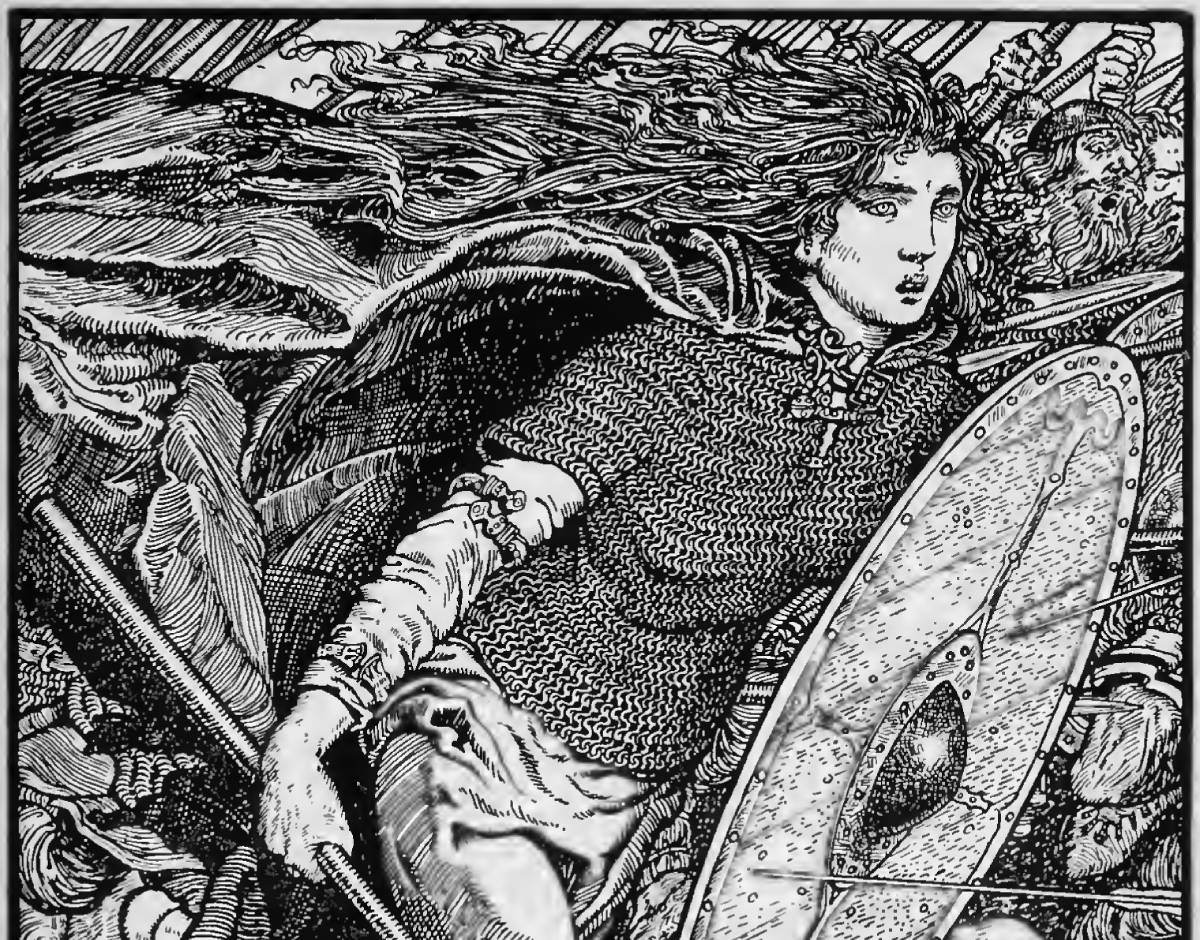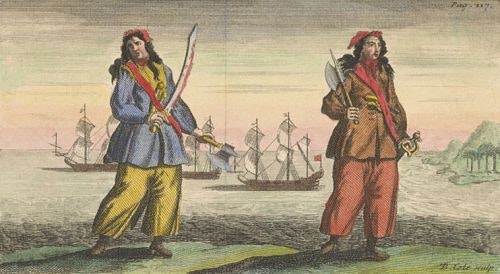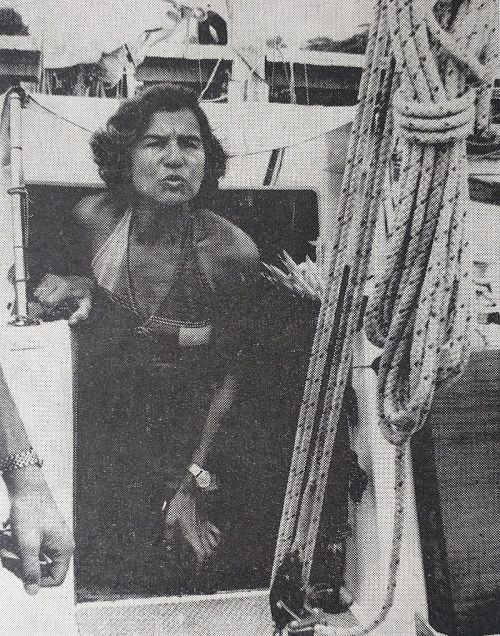Women’s Wild History Of The Sea – Cross Dressing Women and Record Breakers
It’s not a surprise that one of the oldest and most well-known superstitions in yachting is that it was believed that having a women on board a ship was bad luck. The reasons were many, but the biggest being the belief that women would distract the sailors from their duties by arousing the men’s “uncontrollable passions”. It seems we can never shake the Eve story.

Fear that jealousy between crew members if a woman fancied one man over another was another added deterrent, as control of the crew was important for another related reason. It seems that it was beleived that a distracted crew would anger the ocean and cause bad weather or some other misfortune or form of revenge from the sea gods no less.
Women have been the brunt of other sea stories even when they were unseen. In the early days of maritime travels, sailors would attribute any strange sounds heard at sea to sirens, mythical creatures that are half-woman and half-bird. It was believed that the fabled sirens would lure sailors to their deaths by singing sweet songs, drawing them into treacherous waters and rocky shores.
Let’s not forget the other feminine nemesis of sailors, the mermaid, half-woman and half-fish creatures mariners would blame for any strange sea noises accusing them of deception and any bad luck that befell the male voyagers.
Ironically, naked women were believed to calm the sea rather than agitate it. This is the reason that many ship figureheads depict women with bare breasts. The watchful eyes of the female figureheads were also believed to guide the ship to safety. The
Even with the pirates, women were not welcomed. But women disguised themselves and sailed under pirate flags even at the risk of death. They had to master all the skills of seamanship and get used to the difficult and treacherous life aboard a pirate ship. Those who did survive, went on to leave their mark on maritime history.
Viking women were trained in navigation and archery, and some even took up arms. During the Age of Sail, women known as “fisherwomen” took up fishing, often selling their catch at the local markets. During the Napoleonic Wars, women known as “Widow Women” took up the role of captains’ wives, managing the day-to-day running of the vessel in their husband’s absence. In the early 19th century, women such as Isabella Herb and Catharine Robbins became lighthouse keepers, managing the lights and guiding vessels to safety. In the 20th century, the seafaring professions began to open up to women.
Women such as Mary Breckenridge, Maude Roberts, and Mary Louise McLane became the first female merchant marines. In the 1930s, Edna Gallup and Hazel Hoffman became the first female mates in the U.S. Merchant Marine. Since then, women have gone on to become captains, engineers, deckhands, and more.
Today, there are female officers in the U.S. Coast Guard and the U.S. Navy. Women have also become leaders in the fight against ocean pollution and human trafficking, as well as advocates for women’s rights in the maritime industry. These trailblazers have made it possible for countless women to follow in their footsteps, paving the way for a more inclusive and diverse maritime future.
Women Voyaging Pioneers
1. Lagertha – Viking Warrior Maiden
Lagertha was a Viking shield-maiden who is said to have ruled in the 9th century AD in what is now Norway, and was the first wife of Ragnar Lothbrok, King of the Vikings. Despite Ragnar later abandoning Lagertha to marry another women, he sought Lagertha’s assistance when he encountered difficulties in future battles. In one such instance, Ragnar sent to Norway for support in a battle he was losing, and Lagertha came to his aid with 120 ships playing a decisive role in the victory of this battle.
She is described in literature as Ladgerda, a skilled Amazon, who, though a maiden, had the courage of a man, and fought in front among the bravest with her hair loose over her shoulders. All marveled at her matchless deeds, for her locks flying down her back betrayed that she was a woman
2. Jeanne de Clisson (1300–1359)
Jeanne de Clisson was a French noblewoman and also known as the Lioness of Brittany, became a pirate to avenge her husband. He was executed by the French king for treason. To raise her fleet, Sshe sold her property and bought three warships, which were painted black and rigged with red sails. She and her pirates attacked French merchant ships in the English Channel, always leaving a witness alive from the captured ship to deliver a message to the king.
Later on Jeanne de Clisson married Walter Bentley, a military representative of King Edward III of Britain. After 1357, when both nations were exhausted and the war had come to a halt, Jeanne and Walter were granted the barony of La Roche-Moisan as compensation.
3. Sayyida al Hurra (1485–1561)
Sayyida al Hurra lived a life of adventure and romance. Sayyida al Hurra, meaning “noble lady who is free and independent”, was the queen of Tetuan in northern Morocco, known for her pirate activities against Spain and Portugal. Born into a prominent Muslim family of Andalusian nobles, she was forced to flee to Morocco after the conquest of Granada by Ferdinand and Isabella of Castile. She appointed her brother Moulay Ibrahim as vizier to Ahmed al-Wattasi, Sultan of Fez, placing the Rashids as major players in the effort to unify Morocco against the fast-growing powers of Spain and Portugal.
She partnered with Oruc Reis of Barbary Coast fame, who was also known as “Red Beard. His fleet was used to ferry refugees from Spain to Africa as the persecution of religious minorities on the Iberian Peninsula intensified.
In the partnership, Sayyida took the western half of the Mediterranean Sea and terrorized Spanish and Portuguese ships. In addition to defense of her homeland, she received retribution for her family’s exile and became enormously wealthy from the booty and ransom for prisoners.
4. Tracy Edwards
In 1989 Tracy Edwards skippered the first all-female crew in the Whitbread Round the World Yacht Race, and became the first woman to receive the Yachtsman of the Year Trophy. The boat won two legs and came second overall in her class.
Tracy Edwards was a teenager headed down the wring path. At 15 she was expelled from school and left education with no qualifications. Tracy was looking for an escape, a purpose, something more so moved to Greece, where, during her time working on yachts as a stewardess, her sailing career began, leading her to get as much experience on yachts as possible with positions as cook on a yacht in the 1985 Whitbread Round the World race, deck hand, and yacht crew.
Edwards launched her campaign to skipper the first all-female crew in the 1989 Whitbread Round the World Yacht Race making history against a backdrop of sexism and a hounding press that revelled in printing derogatory headlines.
She had met King Hussein of Jordan while working on a charter yacht and he became s supporter of her for her campaign in the Whitbread Race. Her entry Maiden won two of the six legs of the race and finished second in class in the most challenging yacht race of its time. Tracy and her crew proved that women were equal to men in the sailing world.
5. Mary Read (1685–1721) & Anne Bonny
Mary Read and Anne Bonny were two pirates renowned for their ruthlessness and cunning. Mary Read was born to the widow of a sea captain who had perished at sea. When Read’s older brother died, to continue getting monetary support from her in-laws, Mary’s mother begun dressing her up as a boy. Growing up as a boy, Mary enjoyed it so much that she joined the British military as a man.
She later married a Flemish soldier but died and left her penniless. Once again, she disguised herself as a man and was recruited onto a ship bound for the Caribbean. After pirates ambushed the ship, Mary joined them and fell in love with one of them, who turned out to be another woman in disguise, Anne Bony.
Mary and Anne, together with Captain Jack Rackham, an English pirate captain in the Caribbean, continued to loot and destroy. Legend has it that they formed a love triangle, but in 1720 they were all captured. Mary and Anne managed to delay their hanging by claiming to be pregnant, but Mary fell ill with a fever in prison and died. Anne’s wealthy father bailed her out, she changed her name, and later got married and had eight children.
6. Jeanne Baret (1740–1807)
Circumnavigating the globe was not a plan for Jeanne Beret. Her lover, Philibert Commerson, was a well-known botanist and was selected to be part of French explorer Louis Antoine de Bougainville’s round-the-world expedition from 1766-69. The couple formulated a plan for Baret to disguise herself as a young man, and at dockside before departing for the expedition, offer her services as as Commerson’s assistant.
Unfortunately, her identity was found out during the voyage when they landed in Tahiti. A group of Tahitian men surrounded her and immediately identified her as a woman, She became worried that she might be sexually assualted, so revealed her true identity so the crew could save her from what she took to be an imminent sexual assault. Beret and Commerson eventually were dropped off in Mauritius. She later returned to France.
7. Zheng Yi Sao (1775–1844)
Zheng Yi Sao was the most successful female pirate in history. Sao, who was also known as Ching Shih, was born into humble circumstances. At the age of 26, she married Zheng Yi, commander of the Red Flag Fleet. After her husband’s death, the 32-year-old Ching Shih controlled the largest pirate fleet in history: an army of 1,200 men (with a crew of 70,000) that dominated the South China Sea.
She was notorious for handing out harsh punishments for disobedience, and she implemented strict rules that women of raided villages must not be harmed. She also made rape punishable by death. She was ulitmately pardoned by the Chinese emperor, and remarried and ran a gambling house.
8. Mary Lacy (1740–1801)
No history of seafaring can overlook Mary Lacy. She was a British sailor, shipwright and memoirist who was also the first woman to pass an exam and to receive a pension from the British Admiralty. She was a wild child and a handful for her mother, and at the age of 19 she ran away from home disguised as a boy and boarded the ship Sandwich, adopting the name William Chandler. As the Navy was engaged in the Seven Years War at the time, they didn’t ask many questions so she went unnoticed.
On board, Mary suffered a series of hardships, from fistfights to a bout of rheumatic fever which worsened so much that in 1760 she ended up in the hospital. After recovering, she was assigned to the Royal Sovereign, where she remained until 1763 when the war ended.
After her discharge from the navy, she obtained a position as a ship’s laborer in the Chatham dockyard. Working hard and despite being nearly found out, she went on to pass her exams and become a shipwright in 1770. However, in 1771 rheumatism forced her to stop working and she applied to the Admiralty for a pension under her real name Mary Lacy, and it was granted.
9. Krystyna Chojnowska-Liskiewicz (1936–2021 )
Krystyna Chojnowska-Liskiewicz became the first woman to sail around the world solo repeating the accomplishment of Joshua Slocum. Her circumnavigation was carried out on Mazurek, a Conrad 32 sloop built in Poland.
Setting sail from the Canary Islands in March 1976 and returning there in April 1978, she had covered 31,166 nautical miles in 401 days. She was a Polish naval engineer and sailor. She only narrowly beat New Zealander Naomi James who completed her own single-handed circumnavigation on 8 June 1978.
10. Naomi James
While Krystyna Chojnowska-Liskiewicz was the first woman to circumnavigate the globe solo, Naomi James (born 1949) was the first woman to sail around Cape Horn single-handed. Strangely, she couldn’t swim until she was 23 — she had previously worked as a hairdresser before boarding a large ocean liner bound for Europe.
She learned about sailing from Rob James, and while waiting for him to return from an ocean race and marry her, she made the decision to sail single-handed around the world, non-stop. She told Rob her dream on their honeymoon, and had only six-weeks sailing experience at the time. After she and her husband Rob James won the 2000-mile Round Britain Race, she ended her career as a sailor in 1982.
11. Nancy Wagner
Nancy Wagner came from a seafaring family, but she never imagined she’d make a living at sea — when she was growing up, women simply weren’t in positions like that. Originally majoring in communications, she noticed an ad in the media that the U.S. federal marine academy in Kings Point, New York, was opening to women applicants.
Among the first women admitted to the school in 1974, she went on to become the first female ship pilot in the United States, a real pioneer. She served as an advisor to the captains of large cargo ships and tankers, entering and leaving San Francisco Bay — a pilot must know the local tides, currents, wind, weather… Although initially challenging, she managed to earn the respect and trust of others.










